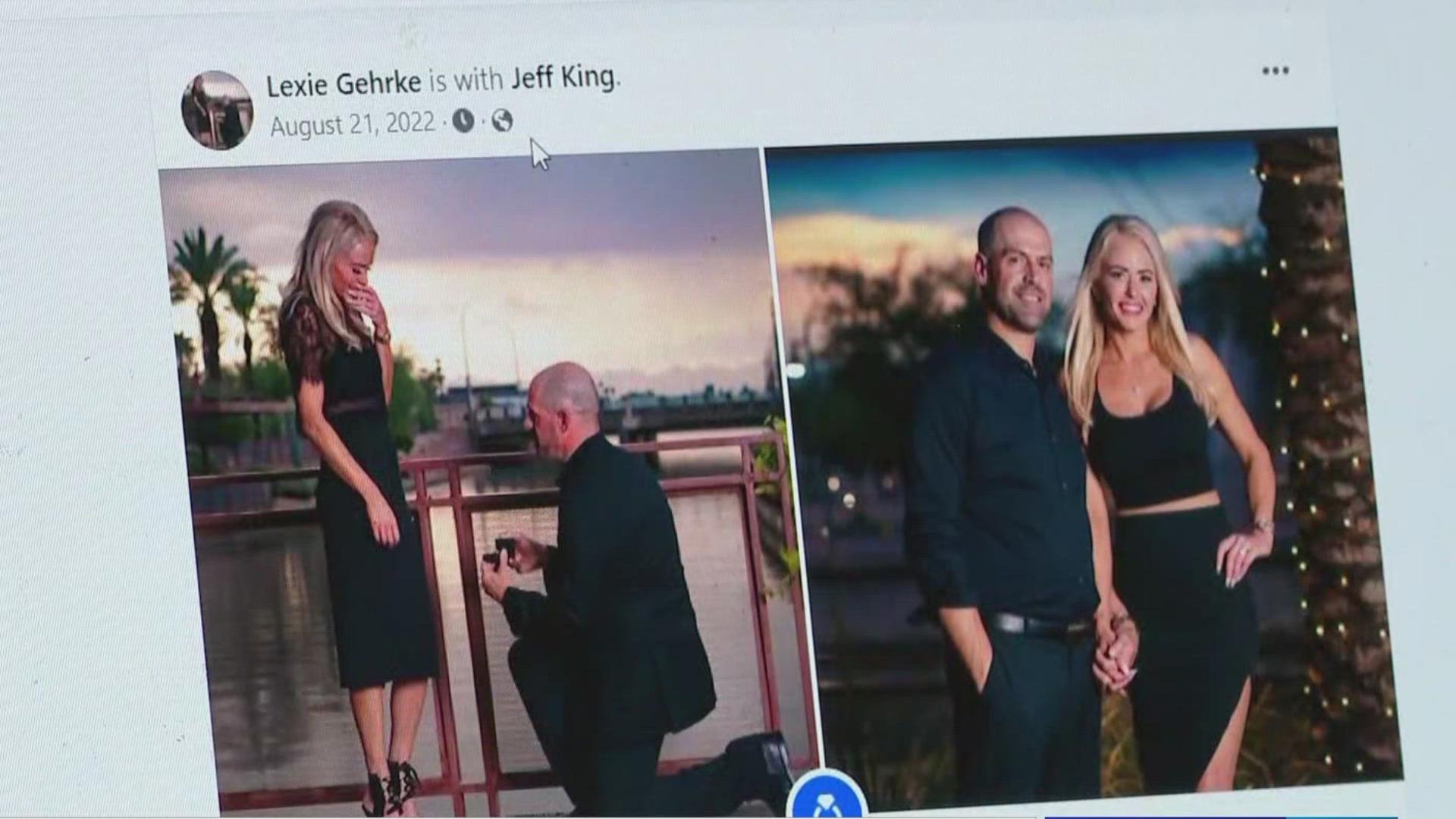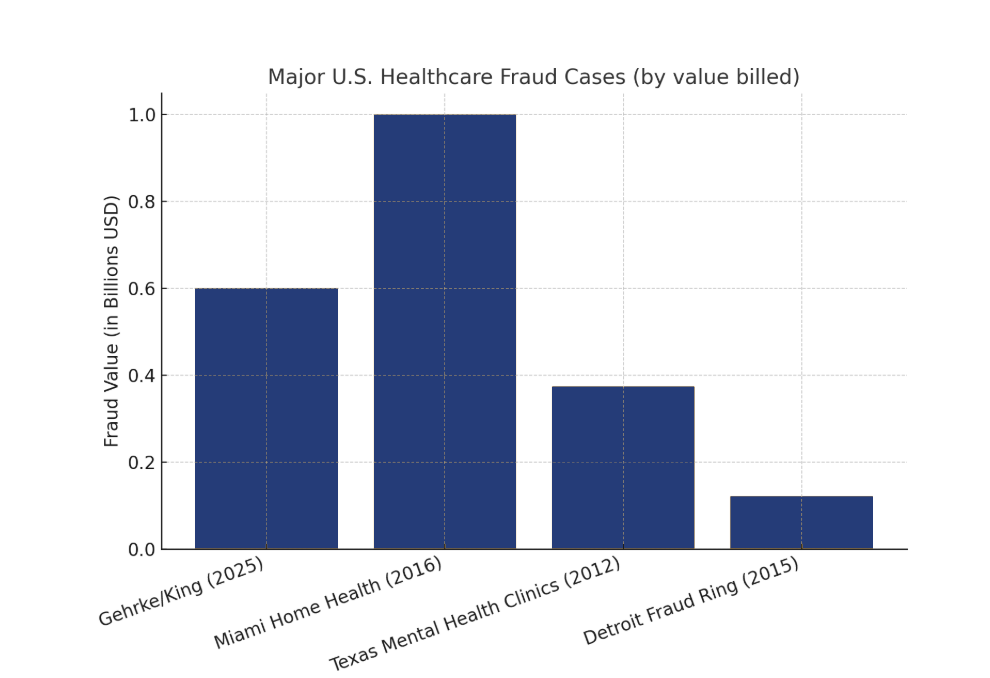Couple Faces Sentencing for $600M Medicare Healthcare Fraud Scheme
A Glamorous Front for a Billion-Dollar Fraud: What Insurers Can Learn from the Gehrke-King Case
When federal agents arrested Scottsdale couple Alexandra “Lexie” Gehrke and Jeffrey King last June, the optics could have been mistaken for a crime drama. She was a 38-year-old medical entrepreneur with model looks. He was a 49-year-old music producer with a taste for fast cars and luxury watches. Together, they projected wealth and glamour.
But behind the glitzy façade was one of the largest health care fraud schemes in U.S. history, a scandal that now serves as a case study in just how far fraudulent billing practices can go—and how insurers must remain on guard.
The Scheme Unfolds
Just four months after their lavish wedding, Gehrke and King were handcuffed while trying to board a plane to France. Prosecutors allege that their short marriage was marked not only by luxury but also by audacious fraud.
Charging documents reveal they billed nearly $900 million in fraudulent claims for medically unnecessary wound grafts. From those claims, they pocketed more than $330 million in illegal kickbacks. Investigators seized $60 million in cash, luxury cars, and a $5.7 million Scottsdale mansion. Authorities also believe the couple held “tens of millions” more in cryptocurrency and offshore accounts.
The scope of the scheme extended beyond Medicare to TRICARE and private insurers. At its center was the misuse of amniotic wound allografts, billed at staggering reimbursement rates—sometimes exceeding $1,000 per square centimeter.
“This was not a lapse in oversight. It was a coordinated effort to siphon hundreds of millions from Medicare and private payers alike.”
— Federal Prosecutor, U.S. Attorney’s Office
A Network of Players
Gehrke and King didn’t operate alone. Their companies, Viking and APX, built a network of nurse practitioners, sales reps, and middlemen who kept the money flowing.
One of the latest to be charged is Daylon Bennett, a Phoenix resident who prosecutors allege received nearly $18 million in kickbacks. As director of sales, Bennett ordered unnecessary grafts for elderly nursing home residents and trained reps to do the same. Records show he was still cashing multi-million-dollar checks from Gehrke as recently as March 2024.
“Medicare reimbursed claims for allografts distributed by Gehrke’s company at an extremely high rate, exceeding $1,000 per square centimeter.”
— From charging documents against Daylon Bennett
The Legal Fallout
Facing what could have been life sentences, both Gehrke and King accepted plea deals in exchange for reduced charges. Gehrke entered her guilty plea first, followed by King in January 2025. Each now faces a maximum of 20 years.
Gehrke is scheduled for sentencing on August 12, 2025, while King’s date has yet to be set. In addition to prison time, the couple has agreed to repay more than $600 million to insurance providers.
The government’s aggressive pursuit of assets—including properties, cars, and cash—signals how seriously regulators are treating the case.
Lessons for the Insurance Industry
For insurers, the Gehrke-King scandal highlights the vulnerabilities of billing systems and the need for rigorous oversight.
Key lessons include:
-
Fraud can thrive in niche medical procedures with high reimbursement rates
-
Kickbacks and sales rep incentives are often the backbone of fraudulent networks
-
Hospice and end-of-life populations remain especially vulnerable targets
-
Oversight gaps across Medicare, TRICARE, and private payers invite exploitation
-
Prosecutions can reshape compliance expectations across the industry
Fraud by the Numbers
To put the Gehrke-King case into perspective, here’s how it compares to other major health care fraud prosecutions:
Caption: The Gehrke/King Medicare fraud ranks among the most significant cases in U.S. history, with $600 million in fraudulent claims—second only to the $1 billion Miami home health case.
Beyond the Headlines
The story of Alexandra Gehrke and Jeffrey King is dramatic enough to capture public attention, but its true significance lies in what it reveals about systemic risks. Fraud of this scale doesn’t just drain taxpayer-funded programs. It undermines trust in health care, inflates costs, and diverts resources away from vulnerable patients who need them most.
As sentencing approaches, the insurance industry will be watching closely. This case may well set the tone for how regulators and insurers respond to emerging fraud schemes in the years ahead.
“If insurers and regulators do not learn from this, similar frauds will continue to siphon billions from programs meant to protect the elderly and vulnerable.”
— Healthcare Fraud Investigator, Phoenix



